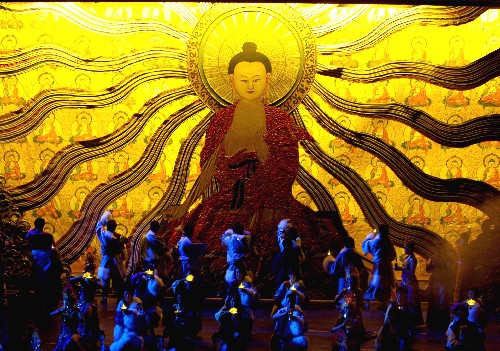
Actors are performing "Shoton Buddha-Unfolding" of "Happiness is on the way", the first Tibetan original ecological song and dance funded with nearly 20 million yuan, photo taken on August 7, 2007 by Pubu Tashi from Xinhua.
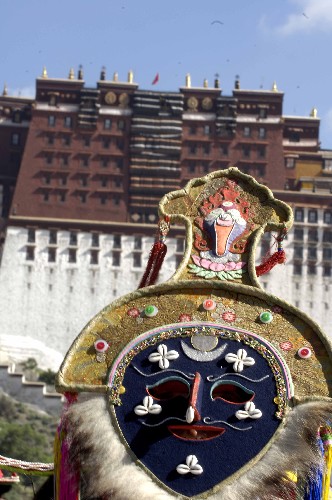
An actor is performing Tibetan opera to celebrate the opening of Shoton Festival, photo by Pubu Tashi from Xinhua on August 12, 2007.
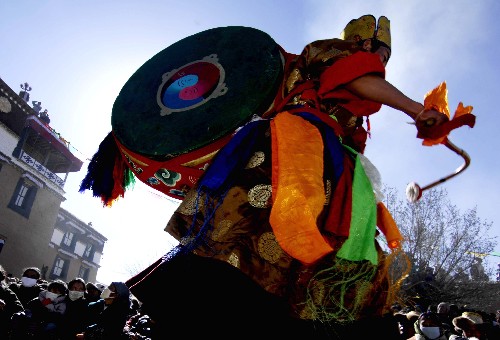
A monk is performing sorcerer’s dance, photo by Pubu Tashi from Xinhua on February 21st, 2007.
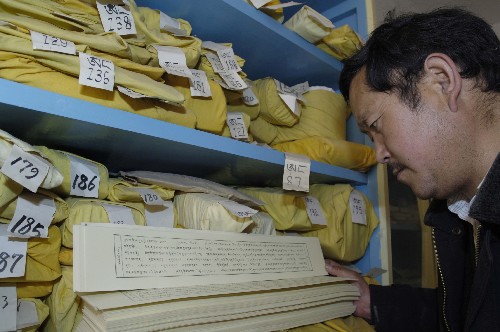
Tseten, a Tibetan scholar from Tibetan Ancient Books Press of Tibet Academy of Social Science, is filing ancient books, photo taken on March 26th, 2008.
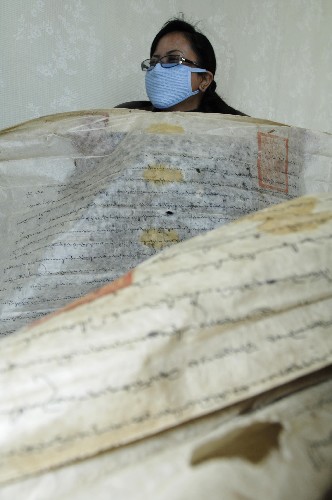
After 1990, "Tanjur of Chinese Tibetan Tripitaka" in Tibetan, "Tibetan Language-Chinese General Catagory of Tibetan Tripitaka" were published in succession, while Kanjur were printed 1,490 copies and religious ritual, biography and arguments of Tibetan Buddhism printed to provide for Gompas to moralize monks and religous believers, photo by Pubu Tashi from Xinhua.
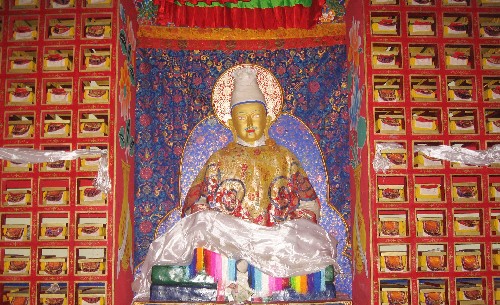
The statue of slob dpon thon mi , the producer of Tibetan language, photo by Pubu Tashifrom Xinhua on June 30, 2007.
Tibetan language is popular in TAR. Resolution, regulations and decrees of People's Congress, formal documents and proclaim from governments in different levels are all publicized in both Tibetan language and Chinese. And both of the languages are used in teaching in elementary schools and middle schools. Most of Tibetan scholars write and publish art and literature work in Tibetan language.
With the development of Tibetan tourism, stage performing,, which shows local customs of Tibet, becomes the most welcomed program by tourists and offers a huge platform for Tibetan traditional song and dance at the same time.
The Central Government and local authorities of Tibet Autonomous Region have attached much importance to inheriting and developing civilization and art of Tibetan ethnic minority all the time. In the past 50 years, Tibetan language teaching, traditional music, dance, folktale and excavating and collecting of ancient books and archives developed rapidly. Meanwhile, Tibet Autonomous Region founded organizations for protecting, collecting and researching ethical cultural heritage to undertake the task of protecting, collecting, and researching, editing and publishing ethical folk literature heritage in unprecedented scale. After decades of large-scale excavation and collection of Tibetan ethical culture, Tibetan culture has been developed, as it is more shinning and prosperous than ever before.
To honor and protect custom of Tibetan ethic minority, traditional festivals, such as the Tibetan New Year, Shoton Festival and so on, have been listed in TAR's holidays celebrated by all Tibetan people, other than national legal holidays.
In the past two decades, the government has invested 700 million yuan to maintain and open up over 1,400 important buildings and Gompas including Potala Palace for the sake of protecting Tibetan traditional culture. From this year, the government plans to lay out 570 million yuan to maintain 22 historic buildings. This is the largest-scale mending project in which the government spends the most for Tibet in once.
(1 USD equals about 7.01 yuan)
